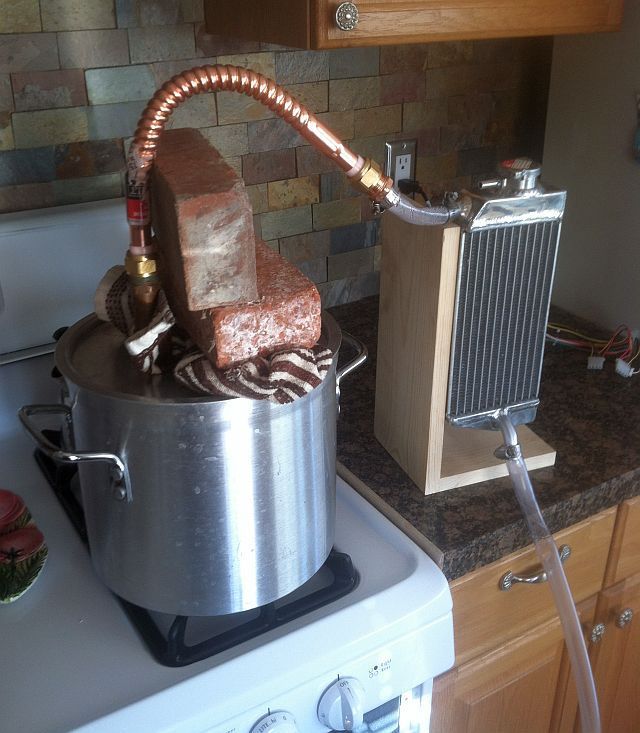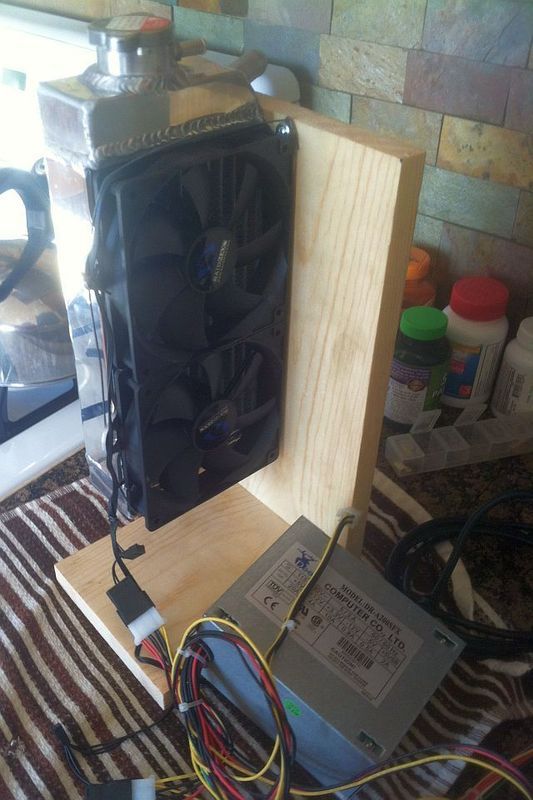So as a public service, I thought I'd post this nerd's demonstration of how one can make distilled water, assuming no economical source can be found.
I made the still below using a 12 quart aluminum stew pot with a tight fitting aluminum lid. I drilled a hole through the lid and screwed in a 3/4" male adapter, attached to a 3/4" female coupler, into which I inserted a 4" length of 3/4" copper pipe. I adapted that to a 3/4" flex line similar to that used to connect domestic water heaters, and fed the inlet of the still with a piece of 5/8" Tygon tubing.

To the back of the radiator, I attached two 5" computer case fans which are powered from a junkbox ATX power supply which provides 12VDC. I half-filled the stew pot, put it on the fire on high and after boiling starts, steam condenses into water in the radiator and trickles out the bottom and into a plastic container.

After collecting about 1 gallon of water, I turned off the fire and found that about half of the original amount of water remained in the stew pot, but it was very murky from the precipitated minerals and probably some aluminum oxides. Once the pot was boiling, it took about 90 minutes to fill the 1 gallon receiver.

The water works fine for CPAP use, and is probably OK to drink, but I don't intend to do so. You never know what materials might have been used in the radiator core, or the flux that was used to join the parts.
My son, who is graduating in the Spring with a degree in aeronautics, saw the still and said to me, "When I see you do stuff like this, I can't help thinking how little I know." High praise! A few years ago, I was a blithering idiot, and didn't know anything. Isn't it ironic that I am the one who has learned so much while he has been away in college!
** The terms distilled, deionized, or demineralized water describe the same product; the difference being in the method by which the water is rendered free of minerals.












